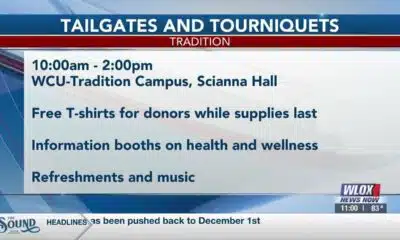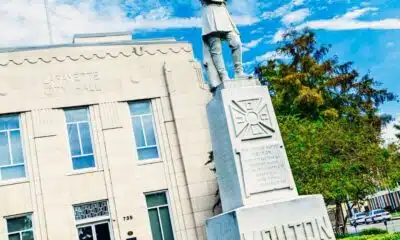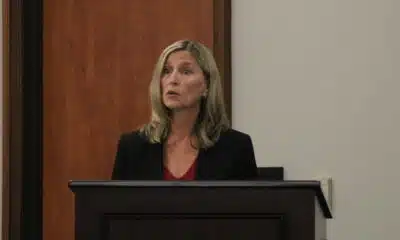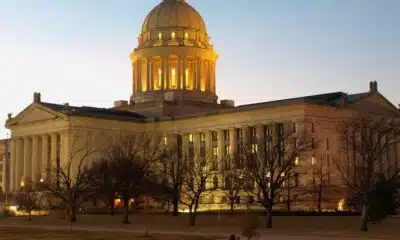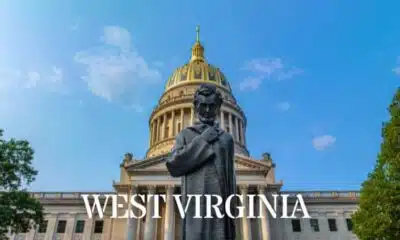News from the South - Texas News Feed
New investigational drug for Alzheimer’s disease
SUMMARY: A Houston doctor highlights a promising new investigational drug for Alzheimer’s disease that not only slows progression but may reverse it. The drug, developed by True Binding, is a monoclonal antibody targeting Galectin-3, a protein that causes harmful clumping of tau proteins in the brain. By blocking Galectin-3, the drug unglues these proteins, potentially reversing Alzheimer’s and benefiting Parkinson’s patients as well. Currently in phase 2A trials for autism, the treatment is available under FDA’s compassionate use program at about \$5,000 per month for four monthly doses. It has minimal side effects compared to existing therapies.
A Houston doctor believes a new drug being studied there offers a huge breakthrough in Alzheimer’s disease
Subscribe to FOX 4: https://www.youtube.com/fox4news?sub_confirmation=1
Dallas news, weather, sports and traffic from KDFW FOX 4, serving Dallas-Fort Worth, North Texas and the state of Texas.
Download the FOX LOCAL app: fox4news.com/foxlocal
Watch FOX 4 Live: https://www.fox4news.com/live
Download the FOX 4 News App: https://www.fox4news.com/apps
Download the FOX 4 WAPP: https://www.fox4news.com/apps
Follow FOX 4 on Facebook: https://www.facebook.com/Fox4DFW/
Follow FOX 4 on Twitter: https://twitter.com/FOX4
Follow FOX 4 on Instagram: https://www.instagram.com/fox4news/
Subscribe to the FOX 4 newsletter: https://www.fox4news.com/newsletters
News from the South - Texas News Feed
Who is Taylor Frankie Paul, the controversial new Bachelorette?
SUMMARY: Taylor Frankie Paul, star of Hulu’s “Secret Lives of Mormon Wives,” is set to be the lead on season 22 of ABC’s “The Bachelorette,” marking the first time the show has cast a Bachelorette from outside its franchise. A single mother of three and Utah-based influencer known for discussing controversial topics like Salt Lake City’s “soft-swinging scene,” Paul gained viral fame and a significant social media following. Despite challenges, including a past legal issue, she is optimistic about balancing motherhood and the show. Paul seeks a hardworking man in his 30s or 40s willing to relocate to Utah. The new season airs in 2026.
The post Who is Taylor Frankie Paul, the controversial new Bachelorette? appeared first on www.kxan.com
News from the South - Texas News Feed
Bystander shot during 2023 police shooting in Austin files lawsuit
SUMMARY: In December 2023, Nakole Curry, 24, filed a lawsuit after being struck in the eye by a bullet during a police shooting outside Soho Lounge on Austin’s Sixth Street, resulting in permanent blindness. The shooting occurred when a man attempted to illegally bring a gun into the bar, prompting police to intervene. The suit alleges insufficient de-escalation efforts and names the City of Austin, APD, and Soho Lounge. The officers involved were not charged, and the internal investigation closed in October 2024. Curry seeks a jury trial and damages capped by Texas law. The APD offers victim support through the Crime Victims’ Compensation Fund.
Read the full article
The post Bystander shot during 2023 police shooting in Austin files lawsuit appeared first on www.kxan.com
News from the South - Texas News Feed
Israeli military urges full evacuation of Gaza City ahead of expanded military operation
SUMMARY: The Israeli military urged a full evacuation of Gaza City ahead of an expanded offensive targeting Hamas’ stronghold amid severe famine conditions. Despite warnings, few Palestinians have left due to exhaustion, overcrowded displacement sites, and high evacuation costs. Israel demolished 50 high-rise buildings, claiming they housed Hamas military infrastructure. Emergency responders rescued some survivors but faced equipment shortages. Protests erupted in Gaza against the evacuation, with medical staff refusing to leave. Hostage families in Jerusalem urged a diplomatic resolution. The UN highlighted the humanitarian crisis, noting displaced families lack shelter and basic needs. Meanwhile, violence continues in the West Bank, with recent killings and retaliatory Israeli measures.
Read the full article
The post Israeli military urges full evacuation of Gaza City ahead of expanded military operation appeared first on www.kxan.com
-
News from the South - Texas News Feed6 days ago
Texas high school football scores for Thursday, Sept. 4
-
News from the South - Louisiana News Feed6 days ago
Portion of Gentilly Ridge Apartments residents return home, others remain displaced
-
News from the South - North Carolina News Feed6 days ago
Hanig will vie for 1st Congressional District seat of Davis | North Carolina
-
News from the South - Alabama News Feed6 days ago
Alabama state employee insurance board to seek more funding, benefit changes
-
The Conversation7 days ago
Scientific objectivity is a myth – cultural values and beliefs always influence science and the people who do it
-
News from the South - Oklahoma News Feed7 days ago
Oklahoma Unprepared for Looming Guardianship Crisis
-
Our Mississippi Home7 days ago
The Hummingbirds’ Last Hooray of Summer
-
News from the South - West Virginia News Feed6 days ago
WV Supreme Court will hear BOE’s appeal in vaccine lawsuit — but not right away









